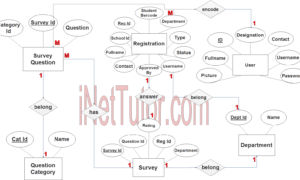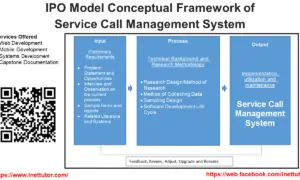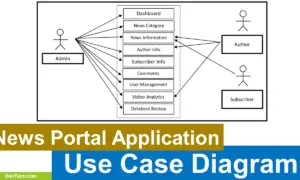IPO Model Conceptual Framework of Queuing System
This article is a tutorial on how to create a conceptual for a Queuing System. The researchers will use the input, process and output (IPO) model to create the conceptual framework.
About the Project
Table of Contents
The capstone project, entitled “Queuing System” is designed to be used by different industries in managing the flow of their customers. The said project will be installed in the queue areas to electronically control the flow of the customers who want to avail services of a certain industry.
Businesses that don’t have an effective queuing system may suffer losses. Monetary and customer losses may be encountered if long queues of customers will not be properly managed and accommodated. The most common scenario that a customer may encounter when visiting a business is the long lines of customers. The customers will be obligated to fall in line while waiting for their turn. Customers will be inconvenienced and will exert too much effort and time by standing and waiting in the long queues. Poor queue management will be a disadvantage in a customer-facing environment.
Objectives of the Study
- To design an automated system that will manage the queuing process.
- The system will assist in controlling the flow of customers to avoid overcrowding.
- To develop a system that will guide customers while waiting for their turn in the line.
- The system will improve customer service and customer experience.
- To design an effective system that will streamline the process of accommodating customers in a systematic and organized way
Conceptual Framework/Model
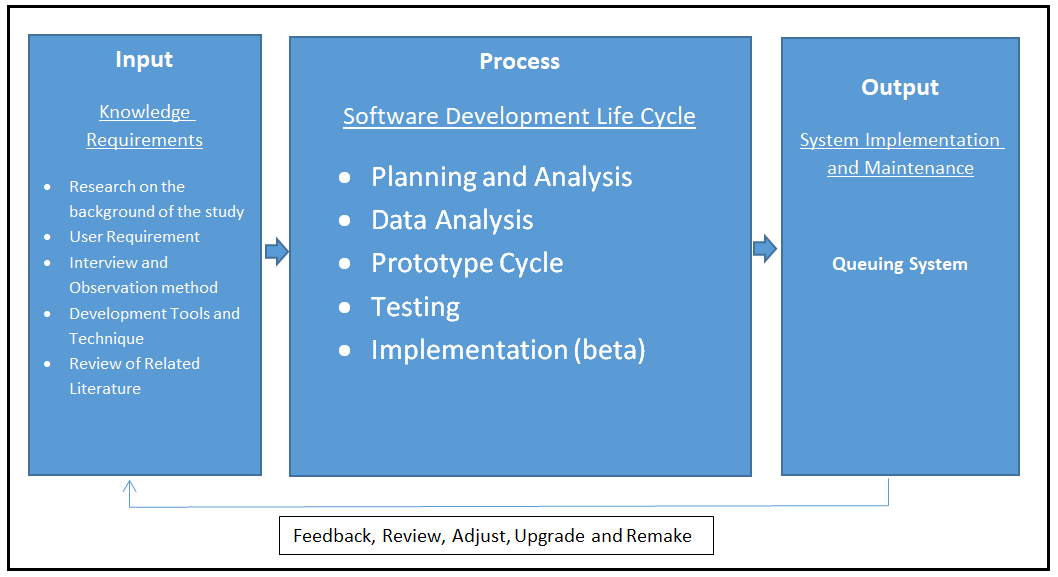
The image above is the conceptual framework of the project entitled Queuing System. It is based on IPO model or also known as the input, process and output model.
Input
The input phase or the knowledge requirement stage consists of the following:
- Research on the background of the study – the researchers looked into the scope of the Queuing System.
- User Requirement – based on the needs of the users, the researchers identified the system’s features.
- Interview and Observation method – the researchers did an interview and observations to be able to grasp better the project on Queuing System.
- Development Tools and Technique – the researchers will need to select a set of development tools suitable to the requirements of the project.
- Review of Related Literature – To aid in the creation of the Queuing System, the researchers performed study on various literatures and related systems.
Process
- Planning and Analysis
During Planning and Analysis phase, the researchers made an interview with the different establishments about their queuing system. After conducting the data gathering, the researchers made an initial design for the proposed system.
- Data Analysis
All information was analysed by the researchers. This phase also helped the researchers to have an idea on how to build and help conceptualize on how the proposed system would be beneficial.

- Prototype Cycle
This stage includes design, development, and testing based on the information gathered and analyzed. The researchers began working on the proposed system. It comprises the design of how the system will seem based on user requirements and research. During the development stage, the researchers gathered all of the data needed to produce the prototype. During the testing phase, the researchers assessed the system’s function, the flow of how it operates, and the feedback process of the proposed system, which had been tested by three (3) experts and its intended users. It notifies the developers if they have any suggestions or issues with the system’s functionality.
- Testing
This is the feedback process of the proposed system after it was implemented and undergone testing by the three Experts and its intended users. It informs the developers if they have any suggestion and flaws of the system functionality.
- Implementation
This phase discussed the implementation of the proposed system which was evaluated by the three (3) Experts. It also discussed if the recommended suggestions of the respondents and users had met.
Output
A new project will be born called Queuing System. To assure the system’s long-term survival, the researchers will deploy and manage it.
A queuing system is a computerized system that manages the flow of people into and out of a service area. Queuing systems are often used in customer service areas such as banks, post offices, and airports. There are many advantages to using a queuing system.
The first advantage of using a queuing system is that it can save time. By ensuring that the flow of people is orderly, a queuing system can speed up the process of accessing a service.
Another advantage of using a queuing system is that it can improve customer satisfaction. When customers are able to access services quickly and without delay, they are likely to be satisfied with the experience. This satisfaction will likely lead to repeat business and increased revenue for the company.
Finally, queuing systems can improve productivity. When people are able to get their jobs done quickly and without disruption, it will save time overall and lead to more efficient workflows. This efficiency will benefit the entire organization and may even result in cost savings.
Summary
This article focused on the conceptual framework for the Queuing System. The study’s conceptual framework is the input, process, and output (IPO) model. Background research, user requirements, interview and observation methods, development tools and procedures, and a review of related literature are all included in the input phase. The researchers will go on to the process phase after completing the input phase, which will employ the Software Development Life Cycle (SDLC) technique. The SDLC technique includes steps such as planning and analysis, data analysis, prototyping, testing, and beta implementation. Queuing System will be the name of a new project. The researchers will implement and manage the system to ensure its long-term viability.
You may visit our Facebook page for more information, inquiries, and comments. Please subscribe also to our YouTube Channel to receive free capstone projects resources and computer programming tutorials.
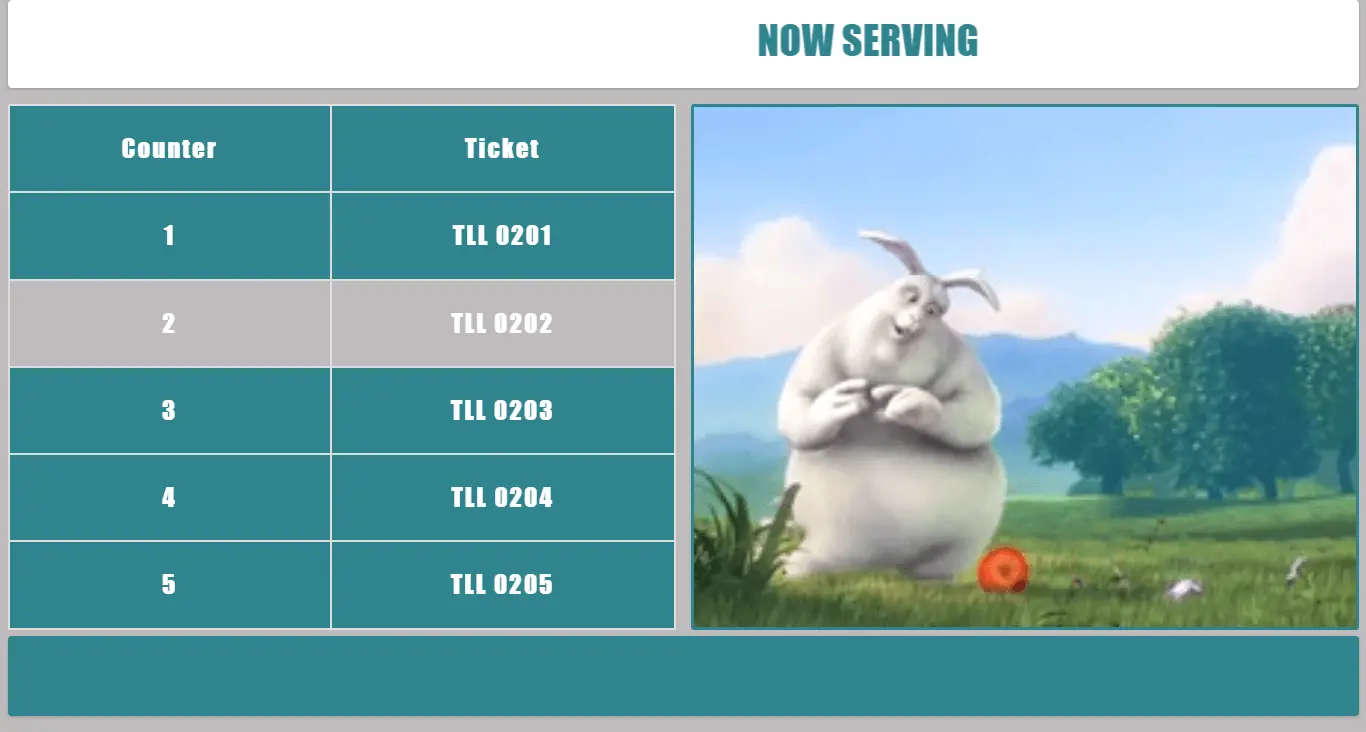
Hire our team to do the project.
Related Topics and Articles:
Teller’s Queuing System User’s Manual
Person with Disability Information System Database Design
Vehicle Parking Management System Database Design
